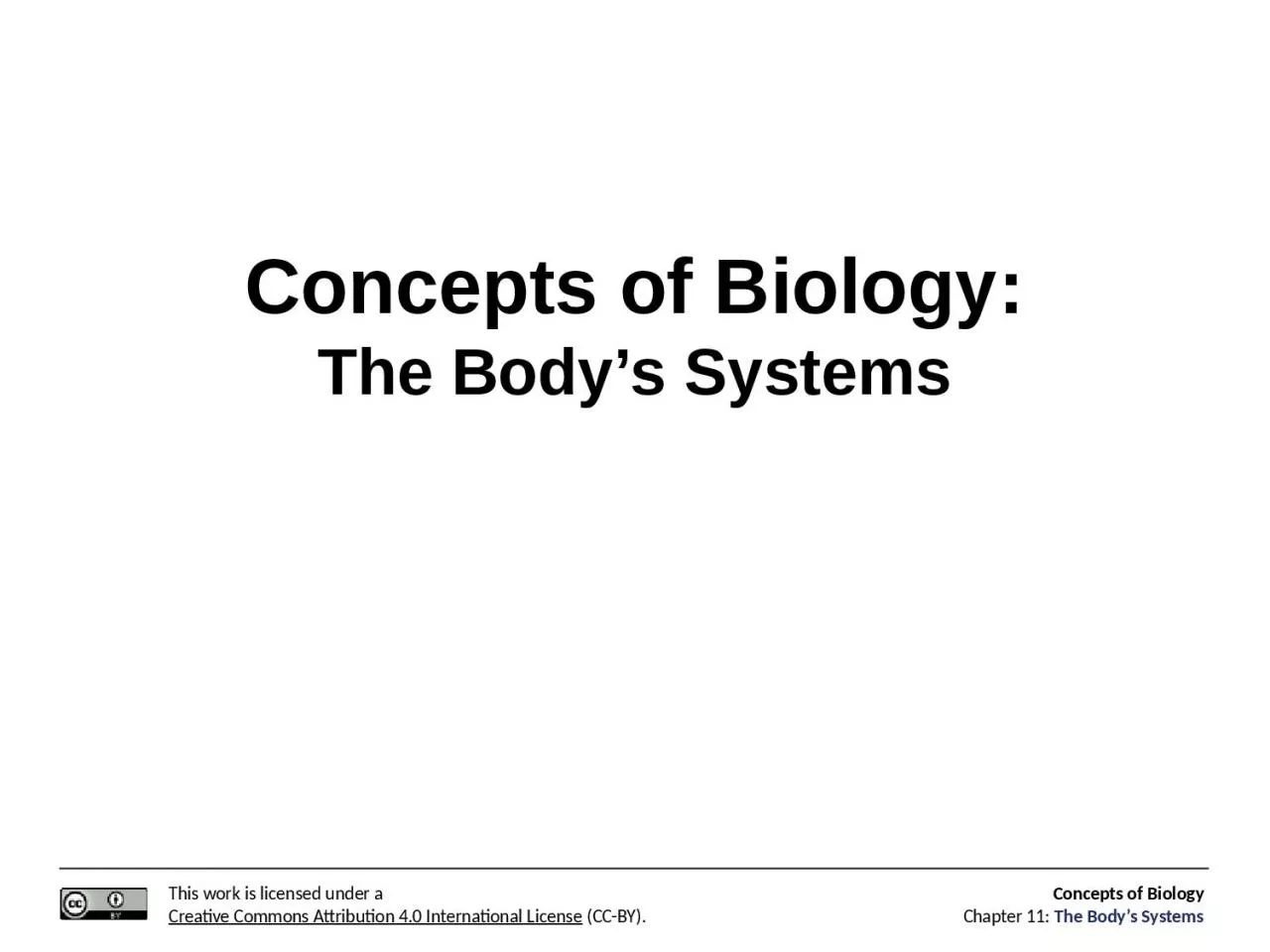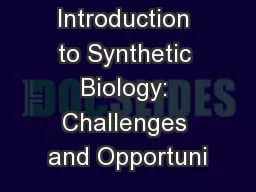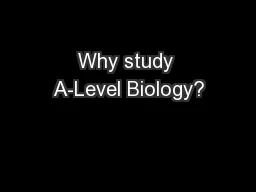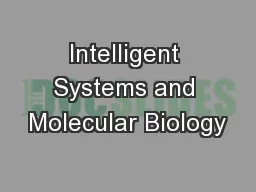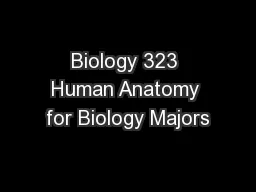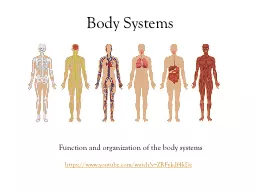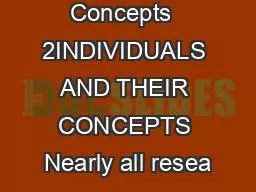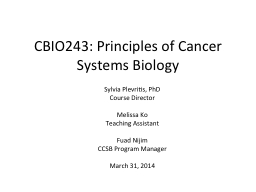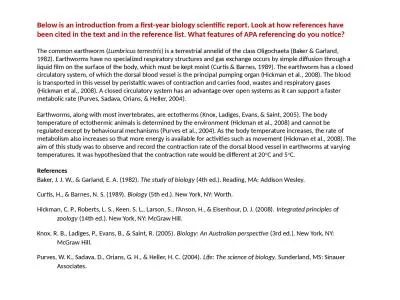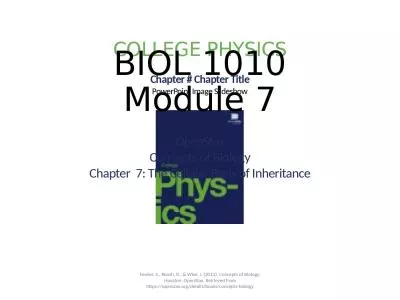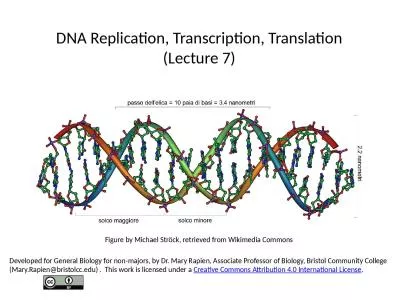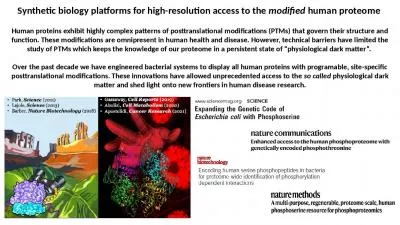PPT-Concepts of Biology: The Body’s Systems
Author : FluffyFace | Published Date : 2022-07-28
An arctic fox is a complex animal well adapted to its environment Credit Keith Morehouse USFWS CONCEPT IN ACTION Watch this Discovery Channel video on thermoregulation
Presentation Embed Code
Download Presentation
Download Presentation The PPT/PDF document "Concepts of Biology: The Body’s System..." is the property of its rightful owner. Permission is granted to download and print the materials on this website for personal, non-commercial use only, and to display it on your personal computer provided you do not modify the materials and that you retain all copyright notices contained in the materials. By downloading content from our website, you accept the terms of this agreement.
Concepts of Biology: The Body’s Systems: Transcript
An arctic fox is a complex animal well adapted to its environment Credit Keith Morehouse USFWS CONCEPT IN ACTION Watch this Discovery Channel video on thermoregulation to see illustrations of the process in a variety of animals. UNIFYING CONCEPTS IN ANIMAL STRUCTURE AND FUNCTION. STRUCTURE FITS FUNCTION IN THE ANIMAL BODY. ANATOMY. DEF . . THE STUDY OF THE STRUCTURE OF AN ORGANISM. PHYSIOLOGY. DEF . . THE STUDY OF THE FUNCTIONS AN ORGANISM PERFORMS. Domitilla. Del . Vecchio. Department of Mechanical Engineering. MIT. May 24. th. . 2011, . Sontagfest. 1. Molecular Systems Biology . and Eduardo. 2. CDC 2005 Tutorial Session an EJC 2005: Molecular Systems Biology and Control. It is an exciting time for Biology. The human genome is known. Gene therapy and gene editing are curing genetic diseases . Stem cells are creating organs and cells. Biodiversity needs to be maintained. Richard H. Lathrop. Dept. of Computer . Science. Univ. of California, Irvine. rickl@uci.edu. Donald Bren Hall 4224. 949-824-4021. “Computers are to Biology as Mathematics is to Physics.”. --- Harold . Lecture . 1. Dr. Stuart S. Sumida. Humans as Vertebrates. Early Development of Humans. Humans as Vertebrates. Phylum . – . Chordata. Dorsal hollow nerve cord. Notochord. Pharyngeal (Gill) Pouches. Postanal. https://www.youtube.com/watch?v=. ZRFykdf4kDc. Body Organization. Your body is made of trillions of cells.. Cells. – Simplest and most basic unit of all living organisms.. Tissue. – A group of cells that are similar and work together to perform a specific function.. Individual Concepts / 4wooden thing the table five the legs and the top six the legs the top and the table or more Sortals such as table seem to resolve this ambiguity and allow counting to take plac Sylvia Plevritis, PhD. Course Director. Melissa . Ko. Teaching Assistant. Fuad. . Nijim. CCSB Program Manager. March 31, 2014. Goals of CBIO243. Introduce major principles of cancer systems biology that integrate experimental and computational biology.. The common earthworm (. Lumbricus. . terrestris. ) is a terrestrial annelid of the class . Oligochaeta. (Baker & Garland, 1982). Earthworms have no specialized respiratory structures and gas exchange occurs by simple diffusion through a liquid film on the surface of the body, which must be kept moist (Curtis & Barnes, 1989). The earthworm has a closed circulatory system, of which the dorsal blood vessel is the principal pumping organ (Hickman et al., 2008). The blood is transported in this vessel by peristaltic waves of contraction and carries food, wastes and respiratory gases (Hickman et al., 2008). A closed circulatory system has an advantage over open systems as it can support a faster metabolic rate (. Chapter 7: The Cellular Basis of Inheritance. Fowler, S., Roush, R., & Wise, J. (2013). Concepts of Biology. Houston: OpenStax. Retrieved from https://openstax.org/details/books/concepts-biology. The cytology or cell biology. . (Gr., . Kytos. -hollow vessel or cell, logos- to discourse) is a biological science which deals with the study of cells from morphological, biochemical, physiological, developmental, . (Lecture 7). Figure by Michael . Ströck. , retrieved from Wikimedia . Commons. Developed for General Biology for non-majors, by Dr. Mary . Rapien. , Associate Professor of Biology, Bristol Community College (Mary.Rapien@bristolcc.edu) . This work is licensed under a . Prepare for your AP Biology exam with confidence using these expertly crafted questions and answers. Dive into key topics and gain insights into effective study strategies. modified. human proteome . Human proteins exhibit highly complex patterns of posttranslational modifications (PTMs) that govern their structure and function. These modifications are omnipresent in human health and disease. However, technical barriers have limited the study of PTMs which keeps the knowledge of our proteome in a persistent state of “physiological dark matter”. .
Download Document
Here is the link to download the presentation.
"Concepts of Biology: The Body’s Systems"The content belongs to its owner. You may download and print it for personal use, without modification, and keep all copyright notices. By downloading, you agree to these terms.
Related Documents

